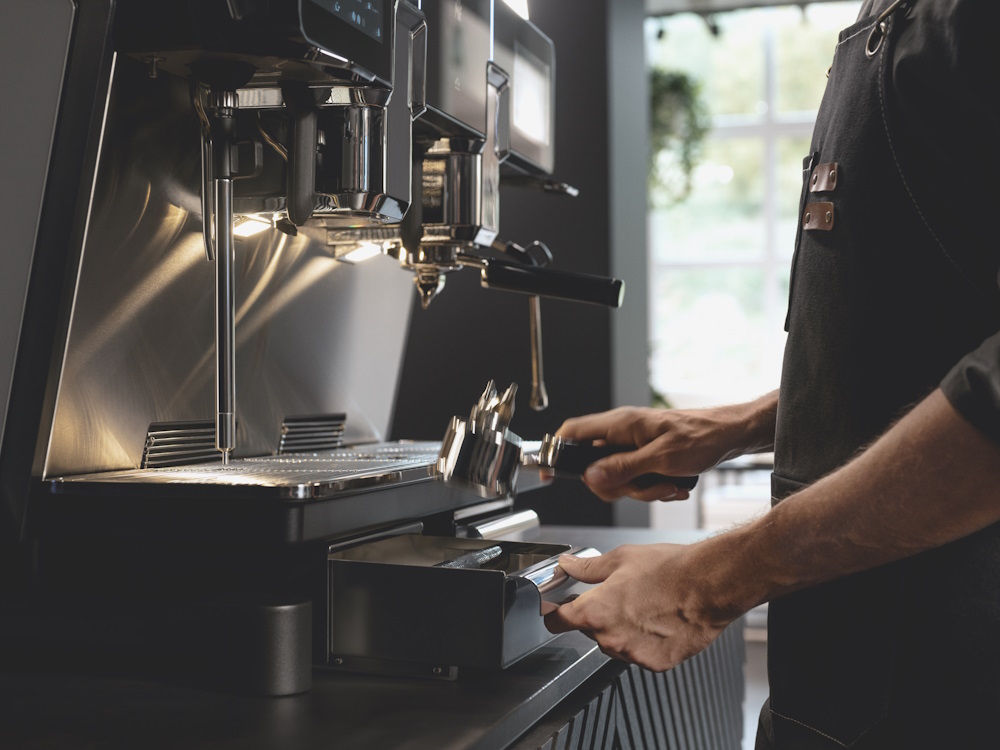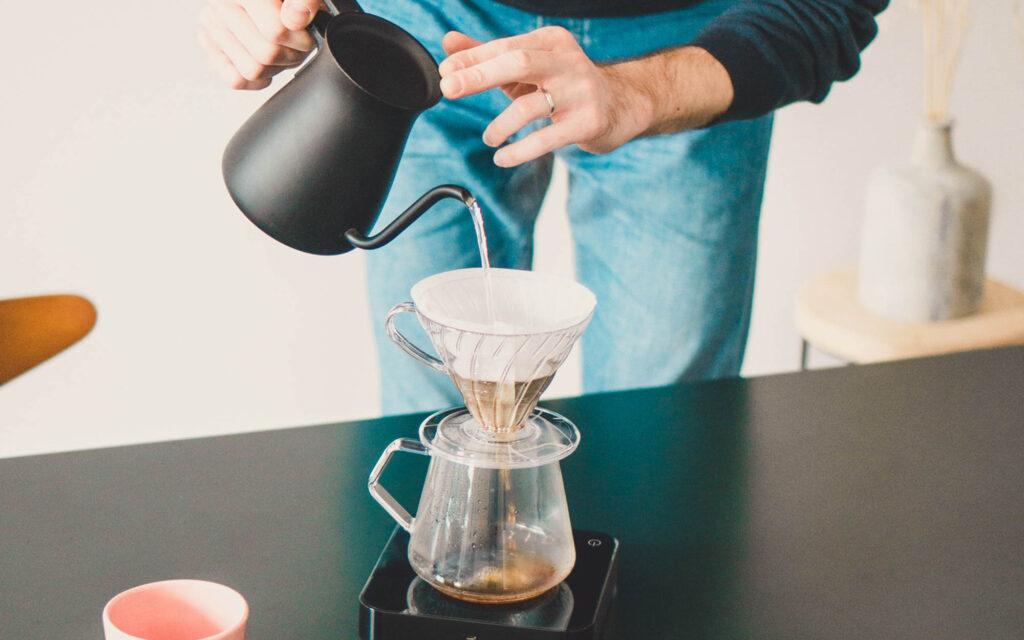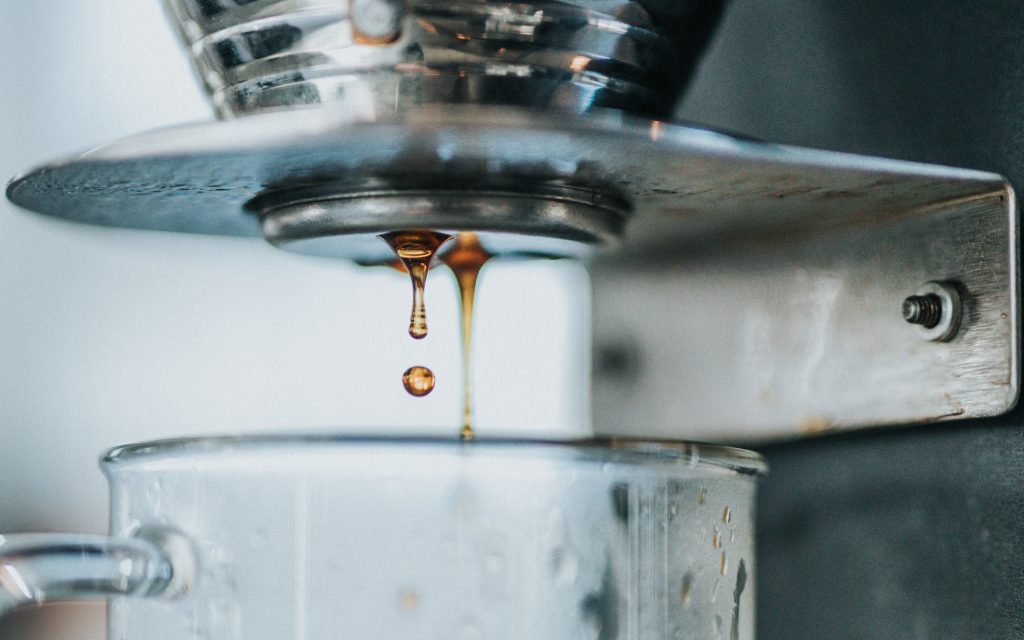How espresso machine automation helps baristas to improve workflow

The goal of any coffee business is to retain a loyal consumer base – and attract new customers on a regular basis, too. By consistently delivering quality beverages and providing professional and efficient service, customers are much more likely to keep coming back.
To achieve this, optimising and organising barista workflow is absolutely essential. When a team of baristas can effortlessly work together, café operations run smoothly – keeping both staff and customers satisfied.
The hospitality industry, however, continues to face labour shortages and high turnover rates. According to a 2022 Caterer article, an average 6% of hospitality staff leave their jobs every month in the UK, which piles even more pressure on business operators.
For coffee shops, this can make it challenging to hire and retain skilled baristas. So to handle these issues as effectively as possible, coffee businesses are leveraging the power of automation to enhance and improve workflow.
To learn more, I spoke with Axel Fähnle, Head of Marketing at WMF Professional Coffee Machines. Read on to find out how coffee shops can use automation to their advantage.
You may also like our article on organising barista workflow in coffee shops.
Why optimising workflow has never been so important
In an ever-evolving specialty coffee industry, baristas have to juggle numerous tasks at any given time. These can range from dialling in espresso to expertly steaming a variety of milks to pouring crisp and high-contrast latte art.
In order to multitask successfully, optimising barista workflow is critical. At its core, effective workflow strikes a balance between speed, efficiency, and consistency that benefits both baristas and customers.
In turn, staff can be more productive and serve more customers in a shorter space of time – all while not compromising on quality and service standards. What’s more, when baristas feel less overwhelmed by their workload, they can also put more effort into engaging more meaningfully with guests and patrons.
Another key part of good café workflow is the ability to maintain the quality and consistency of both beverages and service, no matter which staff members are on shift.
Is automation a solution to staff shortages?
Even if coffee shop operators do all they can to optimise workflow, barista and staff shortages can still be a pervasive issue.
High turnover rates are a reality that the global hospitality industry has been experiencing for some time now. As coffee shop jobs generally require fewer specific hard skills than other sectors, baristas tend to receive less investment from their employers – which makes them feel less motivated to grow in their roles.
Moreover, the pandemic has made the situation worse. In July 2023, trade association UK Hospitality reported that national job vacancies were 48% higher than before Covid-19 – with fewer people incentivised to enter or continue working in hospitality.
Axel Fähnle is the Head of Marketing at WMF Professional Coffee Machines – a commercial coffee machine manufacturer. He points out that with these gaps in employment, demand for trained baristas is higher than ever.
“On the other hand, the number of experienced coffee professionals and baristas is not growing at the same rate,” he adds.
In response to these issues, coffee business operators are turning to automated solutions to provide much needed support – helping to improve quality and efficiency, while also reducing costs.
When it comes to espresso machines specifically, automated technology can ensure consistent extraction by controlling and tweaking many different variables, including:
Flow rate
Pressure profiling
Temperature
Total brew time
Dialling in and preparing espresso can be very complicated, especially for less experienced baristas. By relying on automation, coffee shop operators and managers can relieve some of the burden on these baristas – and can even teach them how to improve their workflow.
How baristas can use automation to enhance their workflow
Espresso machine technology has evolved significantly in recent decades – integrating more and more advanced and intuitive features to improve efficiency and allow baristas to focus on other tasks.
But the level of skill between more and less experienced baristas can be substantial, which can leave room for inconsistencies in beverage quality and customer service. Moreover, a barista of any experience level is likely to make more mistakes when under pressure during busy rushes, which can also disrupt their workflow.
To better address these issues, manufacturers are incorporating more features into their machines.
“The semi-automatic portafilter machine WMF espresso NEXT can help address the current challenges that many coffee shops are facing, such as labour shortages, increased demand on staff, and customers’ expectations to receive quality drinks – no matter when and regardless of the person working behind the bar,” Axel says.
This growing reliance on automation can also help balance out the steep learning curve that baristas often experience during their training, which means they have more capacity to acquire new skills.
Axel explains that the WMF Espresso NEXT’s technology can automate and monitor key processes (such as grinding, dosing, and tamping) to save time and ensure consistency across staff members.
“Manually fine-tuning these variables is no longer necessary,” he adds. “This makes it easy for users with any level of experience to create café-quality beverages.”
Leveraging more intuitive features
For less experienced baristas, using an espresso machine can be intimidating at first. But with more automated systems and features available, staff members can quickly become acquainted with how the machine works – and find ways to use it to their advantage.
Axel explains that the WMF espresso NEXT machine comes with three different portafilter sizes and can automatically detect which one is in use, displaying the possible coffee selections for each size.
“Experienced coffee professionals can work with a portafilter solution that provides them with the level of assistance they need, while still leaving plenty of scope for creativity and experimenting,” he says. “Less experienced baristas, meanwhile, can receive step-by-step guidance and support to prepare drinks.”
He adds that other automated features like the WMF One Touch Americano and AutoSteam systems can further enhance operational efficiency.
“Baristas can steam two jugs with two different types of milk at the same time without compromising machine performance,” he tells me.
Coffee shops will continue to embrace automation
Specialty coffee’s interest in and acceptance of automation increases year after year, ushering in a new era of improved efficiency and innovation. So knowing how to harness its full potential to optimise barista workflow is key.
One way to do this is by using machine features that make it easier for baristas to multi-task. Axel, for instance, says the WMF espresso NEXT can reduce the steps involved in manual espresso preparation by up to 40% compared to traditional machines.
“The time-consuming and error-prone tasks are performed automatically by the machine – including grinding, dosing, and tamping, as well as dispensing and foaming milk,” he tells me.
Automating these tasks frees up time for baristas to engage with customers, potentially leading to shorter wait times, increased sales, and higher customer satisfaction.
Acquiring new skills
Any barista will tell you that learning new skills can be a challenging process. Steaming milk and pouring latte art, for example, are some of the trickiest for new baristas to master, but automated features can make this much easier.
“WMF espresso NEXT’s Auto Milk Dosing system serves the exact amount of dairy or plant-based milk, and automatically steams it to the desired consistency,” Axel explains. “This also helps to reduce waste and costs.”
Additionally, more and more fully-automatic espresso machines include easy-to-use interfaces which guide the user through the entire extraction process.
“Each group head has a separate display for both espresso and milk,” Axel notes. “At every step, the machine explains what is happening and what they need to do next.”
He adds that WMF’s new machine is also equipped with a digital WMF CoffeeConnect platform, which allows baristas to monitor machine data and performance – and ultimately know which variables to tweak to get the best results.
Automation will continue to play a key role in specialty coffee over the coming decades. But as coffee businesses grapple with labour shortages and a lack of skilled baristas, the need to rely on automated technology only grows.
In essence, this means operators and staff need to use automation to their advantage – and their espresso machine is a good place to start.
Enjoyed this? Then read our article on how coffee shops can handle barista & staff shortages.
Photo credits: WMF Professional Coffee Machines
Perfect Daily Grind
Please note: WMF Professional Coffee Machines is a sponsor of Perfect Daily Grind.
Want to read more articles like this? Sign up for our newsletter!
The post How espresso machine automation helps baristas to improve workflow appeared first on Perfect Daily Grind.





Responses